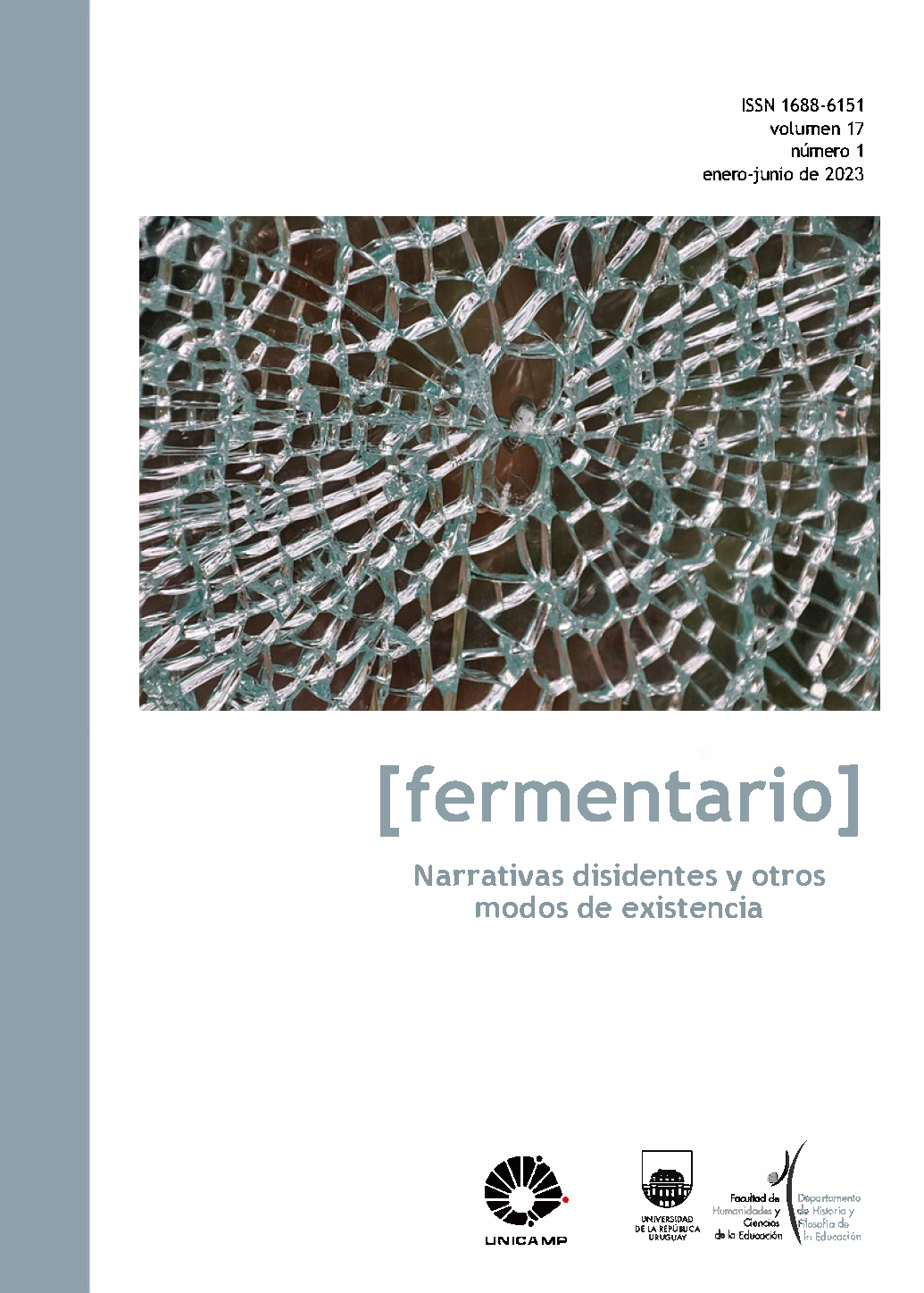Published 2023-06-30
Keywords
- Marosa di Giorgio,
- cuentos maravillosos,
- narrativa erótica,
- literatura de mujeres
- Marosa di Giorgio,
- wonderful tales,
- erotic narrative,
- women`s literature
- Marosa di Giorgio,
- contos maravilhosos,
- narrativa erótica,
- literatura feminina
How to Cite
Abstract
From a psychoanalytic perspective and taking the contributions of feminist studies and the categories of the marvelous and neo-baroque, two erotic stories by Marosa di Giorgio de Poemas (1953) and Camino de las pedrerías (1997) are analyzed, where scenes are presented dissident marriages, emancipated or transgressors of family, religious or cultural mandates. In them, the unexpected union between the sexes occurs, the crossing of species, genres and orders of reality. The moment of the loss of the virginity of the protagonist that oscillates between the sacred and the fall is obsessively repeated. The desecrations perpetrated by phallic characters, of a human, animal, vegetable or uncertain nature, sometimes angelic or demonic, are exhibited. The ominous and the strange are always present in these sexual initiation rites. Unusual and unexpected births also occur, as forms of the abject, as a result of these encounters, rapes or monstrous assaults.
Downloads
References
- Benítez Pezzolano, H. (2012). Mundo, tiempos y escritura en la poesía de Marosa di Giorgio. Montevideo: Estuario.
- Bettelheim, B. (1994). Psicoanálisis de los cuentos de hadas. Traducción Silvia Furió. Barcelona: Crítica.
- Bravo, L. (2012) Voz y palabra. Historia transversal de la poesía uruguaya 1950-1973. Montevideo: Estuario editora.
- Étiemble, R. (1977). Ensayos de literatura (verdaderamente general). Traducción Roberto Yahni. Madrid: Taurus.
- Kolbenschlag, M. (1993). Adiós Bella durmiente: crítica de los mitos femeninos. Traducción Mireia Bofill. Barcelona. Kairós.
- Larre Borges, A. (2017). Historiando a Eros en Marosa. Revista de la Biblioteca Nacional, 13, 219-233.
- Mateo del Pino, Ángeles. (2001) La literatura erótica frente al poder. El poder de la Literatura erótica. Revista de la Facultad de Filosofía y Humanidades, N°17. https://web.uchile.cl/publicaciones/cyber/17/tx7.html
- Miller, H. (1968). La obscenidad y la ley de reflexión. En Lawrencw, D.H. y otros, England Penguin Books, p. 90-91.
- Navarro-Goig, G. (2019) Revisión de la identidad femenina en los cuentos de hadas y su reinterpretación en el arte contemporáneo. Arte, individuo, sociedad, 31(3), 491-507.
- Torres, A. (2021). Los nombres del deseo. Montevideo, Brecha, 6 de agosto.
- Von Franz, M.L. (1990). Símbolos de redención en los cuentos de hadas. Traducción María Sepúlveda. Barcelona: Luciérnaga.
- Zipes, J. (2014). El irresistible cuento de hadas. Historia cultural de un género. Traducción Silvia Villegas. Buenos Aires: Fondo de Cultura Económica.

